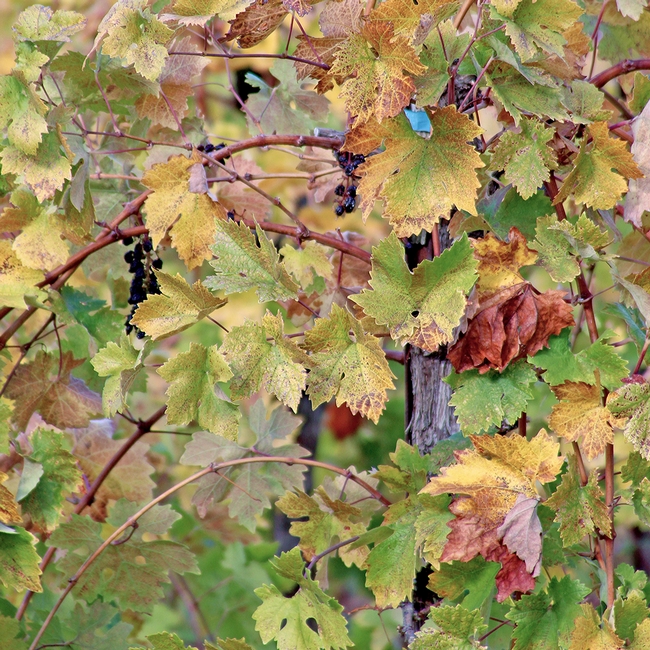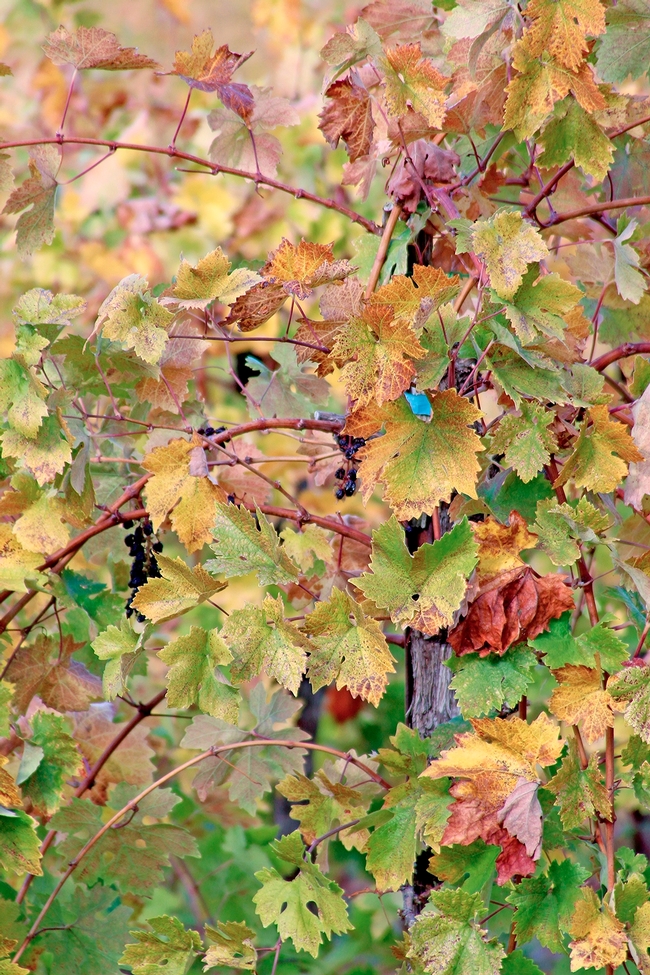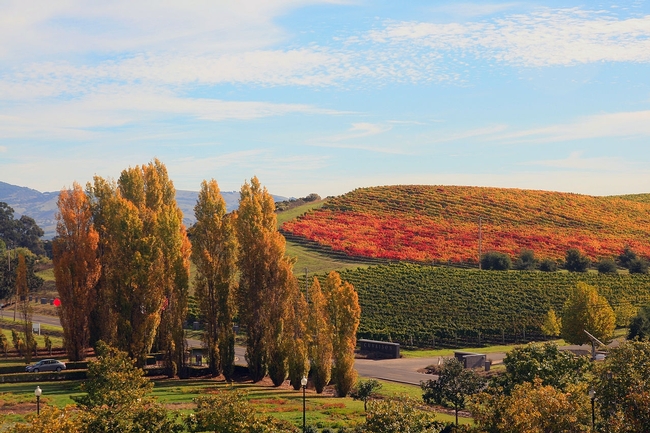
Posts Tagged: red blotch
Grape experts give workshops on drought preparedness, red blotch
Grape growers and other industry members interested in grape production and water management in vineyards are invited to UC Cooperative Extension's Grapevine Drought Preparedness Workshops.
The workshops will be held in person on Friday, March 4, in San Luis Obispo and Friday, April 1, in Hopland.
Registration is $50 and includes a full day of live instruction from UC Cooperative Extension viticulture and grapevine experts. Lunch will be provided.
For more information and to register, visit https://ucanr.edu/sites/ShortCourse17.
UC Davis Grapevine Red Blotch Disease Symposium
On Wednesday, March 16, UC Cooperative Extension and the UC Davis Department of Viticulture and Enology will host a Grapevine Red Blotch Disease Symposium 9 a.m.-3:30 p.m.
Red blotch disease in grapevines, which can dramatically reduce the value of winegrapes, harms plants by inhibiting photosynthesis in the leaves. Infected vines are unable to conduct water effectively, leaving sugar that is created by photosynthesis stuck in the leaves instead of in the berries.
This event will be presented both in person at the UC Davis Conference Center and livestreamed for those unable to attend in person.
Presentations will cover the role of treehoppers, treatments, mitigation strategies, the impact of the disease on the composition of wine, and more.
Registration is $250 for the in-person symposium at UC Davis and $150 for the livestream. An application for 3.5 CCE units has been submitted to California Department of Pesticide Regulation and is pending approval.
To see the agenda and to register, visit https://wineserver.ucdavis.edu/events/uc-davis-grapevine-red-blotch-disease-symposium.
A Bug That's Not Wanted in the Vineyards
Back in July of 2016, a team of researchers affiliated with the University of California, Davis,...
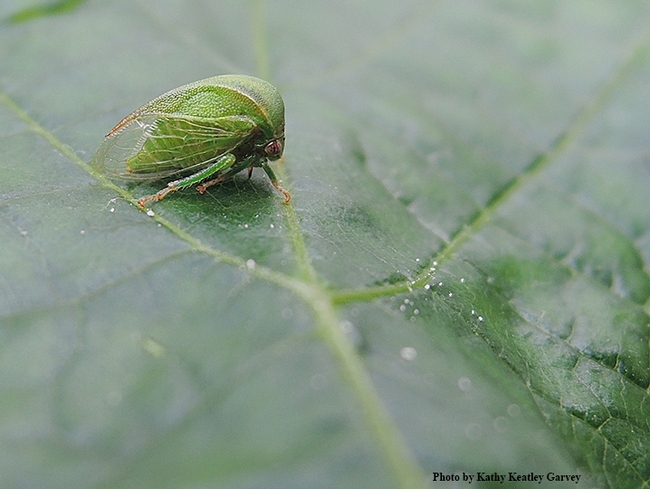
The three-cornered alfalfa leaf hopper, Spissistilus festinus, transmits the grapevine red blotch virus. (Photo by Kathy Keatley Garvey)
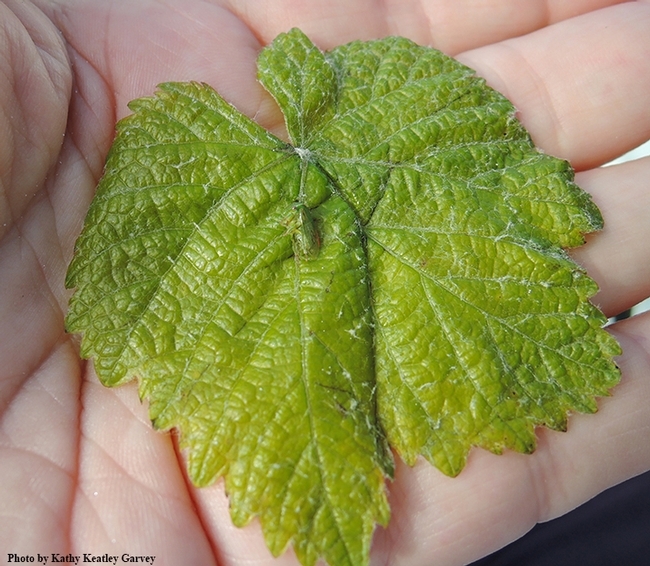
A three-cornered alfalfa leaf hopper, Spissistilus festinus, on a grape leaf. (Photo by Kathy Keatley Garvey)
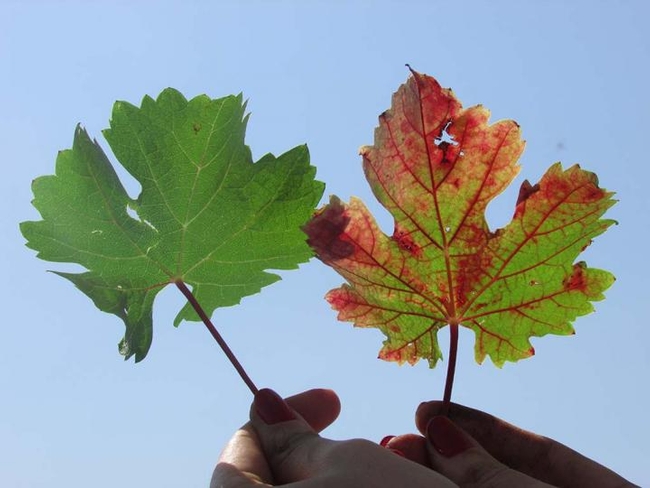
The leaf on the right has grapevine red blotch virus. (Photo by Raul Girardelo, UC Davis)
UC researchers discover how grapevine red blotch virus diminishes winegrape value
Grapevine red blotch virus, a disease that is dramatically reducing the value of winegrapes in California's premium wine production region, is harming plants by inhibiting photosynthesis in the leaves, according to research published this month in the Journal of Agricultural and Food Chemistry.
The new research also showed that infected vines weren't able to conduct water effectively, leaving whatever sugar that was created by photosynthesis stuck in the leaves. The accumulation of sugar in the leaves results in reduced sugar in the berries and lower-quality wine, said UC Cooperative Extension specialist Kaan Kurtural, one of the study authors.
According to the report, sucrose and its monosaccharides were the vast majority of soluble sugars found in the leaves. The leaf sugar tended to decrease in the ripening process on red blotch negative vines. But this was not the case in red blotch positive vines. As a result, grapevines infected with the virus produce winegrape clusters with reduced sugar content, poor color development and increased acidity.
Kurtural said the research will inform winegrape growers as they consider possible treatments in vineyards with grapevine red blotch-infected vines.
“There are some treatments that are being offered to growers, but now that we better understand the disease, we know they won't help,” Kurtural said. “Growers don't have to replace the infected vineyards immediately. But if 40 percent of vines are infected, they may want to consider replanting. At least now we know what the disease does, so they won't pay for snake oils.”
Grapevine red blotch virus was first discovered in the Oakville Experiment Station, UC Davis' research vineyard in Napa Valley, in 2008. Since then, researchers found the virus in grapevines throughout California and in 11 other states.
For the new research, the scientists compared naturally infected winegrape vines at the Oakville Station on two rootstocks – 110 R and 420 A – with vines grown on those two rootstocks that were not infected. Grape clusters were collected to examine differences in berry weight, titratable acidity, pH and total soluble solids.
“All those characteristics are important for wine quality,” Kurtural said. “Acidity and pH effect palatability and storage potential. Berry weight and soluble solids impact the physical characteristics of the wine.”
The grapevine red blotch virus impact on anthocyanidins and tannins are a still greater concern for winegrape growers as they change the flavor profiles sought in premium wines.
“High-value winegrapes are sold between $7,000 to $23,000 a ton. If the winegrapes don't have the profiles that wine makers are looking for, they may only be valued between $1,500 to $2,000 per ton,” Kurtural said.
The research was conducted by UC Davis post-doctoral students Johann Martinez-Buscher, Cassandra Plank, Runze Yu and Luca Brillante in collaboration with Kurtural, UCCE viticulture specialist Anita Oberholster, UCCE advisors Monica Cooper and Rhonda Smith and UC Davis Foundation Plant Services academic administrator Maher Al-Rwahnih.
Meet the Researchers and the Three-Cornered Alfalfa Hopper
UC Davis-based research involving the Grapevine Red Blotch Disease and the three-cornered alfalfa...
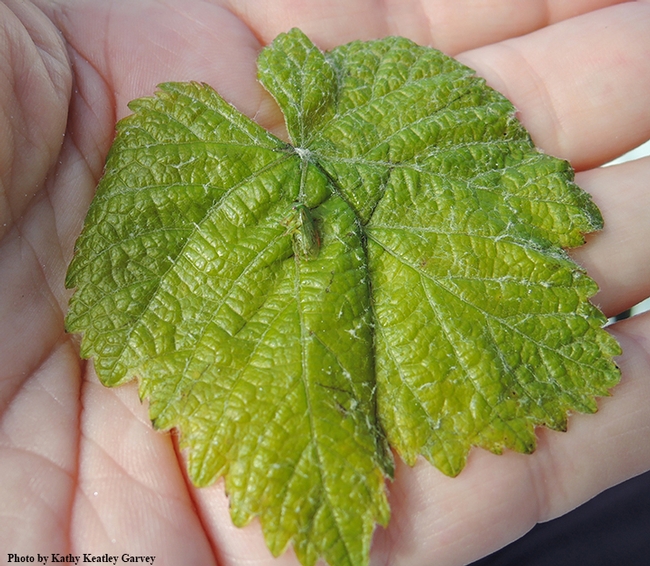
The tiny three-cornered alfalfa hopper on a grape leaf. (Photo by Kathy Keatley Garvey)
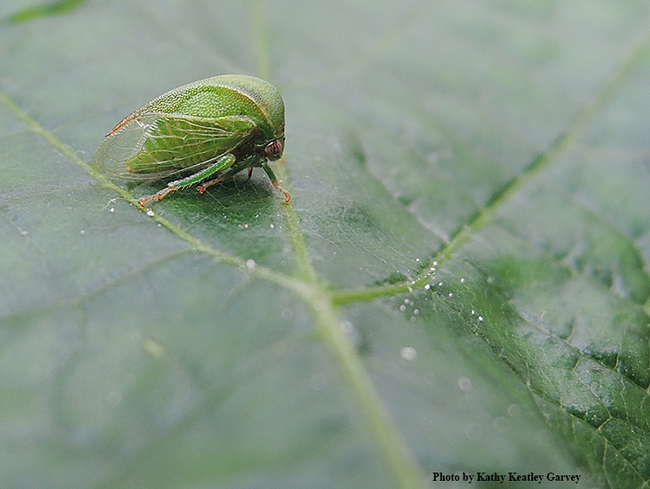
The three-cornered alfalfa hopper, Spissistilus festinus. (Photo by Kathy Keatley Garvey)
Researchers suspect leafhopper may be spreading red blotch

In 2008, UC Cooperative Extension specialist Jim Wolpert and staff research associate Mike Anderson identified red blotch as a disease caused by a distinct virus. Since then, it has been found in numerous California regions, as well as 11 other states, including all major U.S wine states.
As suggested by its name, the disease turns grape leaves a blotchy red color. The infected grapevines may produce clusters with reduced sugar content, causing delayed harvests. Poor color development and increased acidity are found in some clusters on diseased vines. There is no cure.
The Wine Spectator article said UC Davis and USDA Agricultural Research Service may have made a breakthrough in understanding how the disease is spread. After running experiments with various insects found in infected vineyards, they theorize that the three-cornered alfalfa treehopper is a probable vector for the disease. Greenhouse-raised, disease-free control vines were found to have contracted red blotch after exposure to treehoppers from infected vineyards.
The treehopper mostly feeds on plants near vineyards — fruit trees and grasses. It sometimes feeds on leaves, but was considered a minor pest. If the treehopper is the disease vector, farmers will have a target for treatments that could slow the spread of red blotch.
"Management strategies so far have relied exclusively on careful selection of clean planting materials from virus-tested stocks," said Marc Fuchs of the School of Integrative Plant Science at Cornell University. "So the identification of the three-cornered alfalfa treehopper as a vector is putting researchers in a position to develop more effective management strategies."

